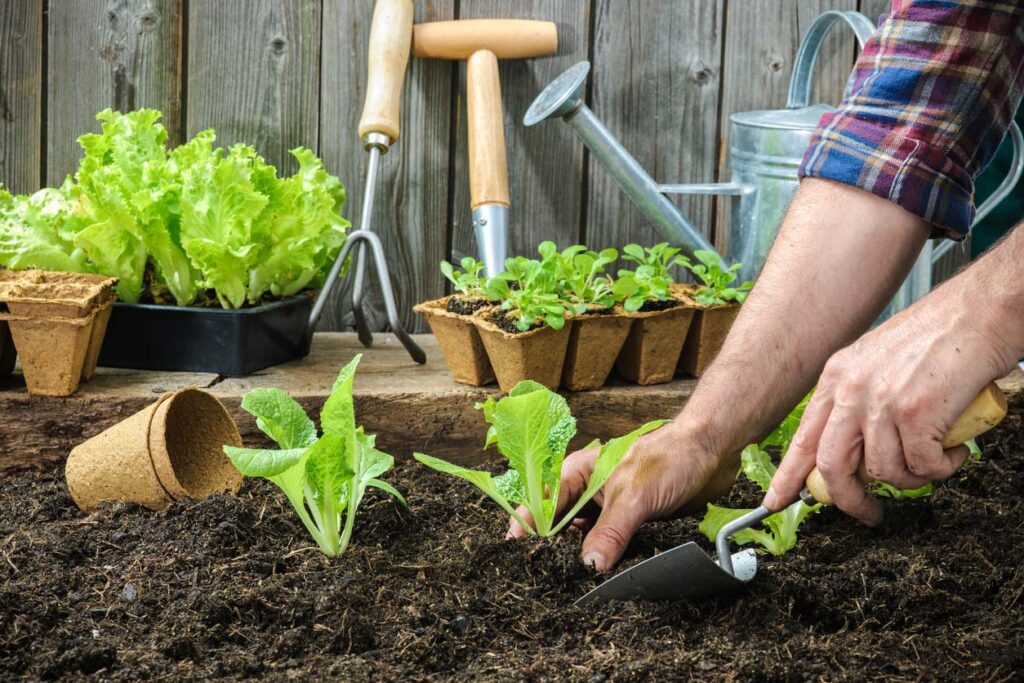Are you tired of constantly shelling out cash for fresh produce at the grocery store? Do you want to take control of your food supply and save money while doing so? Look no further than growing your own vegetables! Not only is it a cost-effective solution, but it also provides a sense of satisfaction from growing something yourself. In this blog post, we will dive into the steps necessary to start your vegetable garden and how it can help save you money in the long run. Get ready to dig in!
The benefits of growing your own vegetables
There are many benefits to growing your own vegetables. Not only can you save money, but you can also get healthier and fresher vegetables. Growing your own vegetables also allows you to control the quality of your food and how it is grown. You can use organic methods to grow your vegetables, which is better for the environment and your health.
You can use combinations of plants that work together and help reduce the use of chemicals to combat insect damage as well as growing strong smelling herbs.
Poached egg plants are wonderful to grow with vegetables because they attract hoverflies which eat the aphids (greenfly, whitefly…)
The best vegetables to grow at home
Vegetables are a healthy and affordable addition to any diet, and growing your own at home can save you even more money. But with so many different vegetables to choose from, it can be tough to know which ones to grow.
Here are some of the best vegetables to grow at home, whether you’re a beginner or a seasoned pro:
Tomatoes: One of the most popular vegetables to grow at home, tomatoes are easy to care for and can be grown in a variety of ways (in the ground, in containers, etc.). Plus, they’re a great source of vitamins A and C.
Peppers: Peppers come in all sorts of shapes, sizes, and colors, making them a fun vegetable to grow. They’re also relatively easy to care for and can be grown in both sunny and shady areas.
Cucumbers: Cucumbers are perfect for hot summer days when you want something cool and refreshing. They’re also easy to grow – just make sure they have plenty of water.
Lettuce: Lettuce is another easy-to-grow vegetable that does well in both sunny and shady areas. It’s perfect for salads or as a garnish on other dishes.
Spinach: Spinach is packed with nutrients like iron and calcium, making it a great addition to any diet. It’s also one of the easiest vegetables to grow – just make sure it gets enough water.
Dwarf French Beans and Broad beans: very easy to grow and you can get a good harvest from them, as long as you like beans! They are also fun to watch grow because they are quick and interesting! Broad bean flowers are stunning with their white flowers and black marks!
How to get started growing your own vegetables
If you’re looking to save money and eat healthier, one of the best things you can do is start growing your own vegetables. It may seem like a daunting task, but with a little planning and effort, anybody can do it!
Here are a few tips to get you started:
- Choose the right spot. Make sure you have enough space for the type of vegetables you want to grow, and that the spot gets plenty of sunlight. If you’re limited on space, consider growing vegetables in containers on your porch or balcony.
- Start small. Don’t try to grow everything at once – it’s better to start with a few plants and expand your garden as you get more experience.
- Get the right supplies. You’ll need soil, seeds or seedlings, fertilizer, watering cans or hoses, and perhaps some pest control supplies depending on what type of pests are common in your area. Your local nursery or gardening store can help you figure out what you need.
- Be prepared for maintenance. Growing vegetables takes work – you’ll need to water them regularly, pull weeds, and keep an eye out for pests. But it’s worth it when you enjoy delicious homegrown produce!
- If you want to try and create your own liquid fertiliser: you can simply use deep-rooted weeds such as dandelions and docks. Put them in a bucket or large container with and fill with water, let is seep for 2-4 weeks and then drain off the liquid, and use this to feed your plants in small amounts.
Conclusion
Growing your own vegetables can be a great way to save money and get fresh, organic produce. Not only is it cost-effective, but it also allows you to control the quality of what goes into your food.
With just a bit of planning and effort, you can easily set up a garden that will provide you with an abundance of nutritious fruits and veggies all year round! So why not give it a try? You’ll soon find yourself reaping the rewards of homegrown goodness.
If you want to know more then get in touch with Catherine, The Garden Lady, as she is an expert in plant design and can advise and guide you to create your perfect outdoor space.

